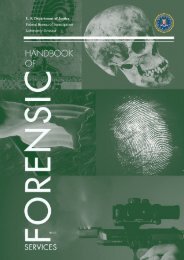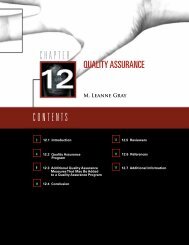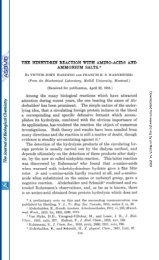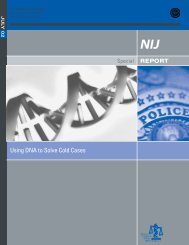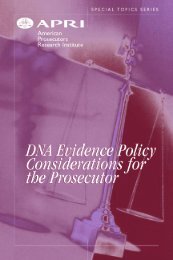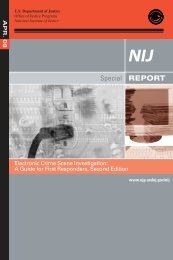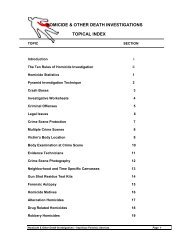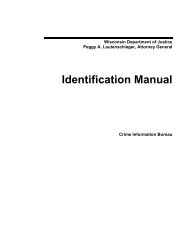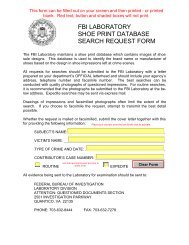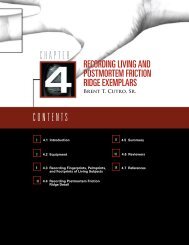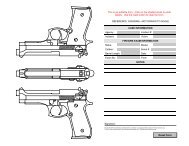Mass Fatality Incidents: A Guide for Forensic Identification
Mass Fatality Incidents: A Guide for Forensic Identification
Mass Fatality Incidents: A Guide for Forensic Identification
- No tags were found...
You also want an ePaper? Increase the reach of your titles
YUMPU automatically turns print PDFs into web optimized ePapers that Google loves.
Section 4.3: <strong>Identification</strong> of Human Remains—<strong>Forensic</strong> AnthropologyI. Role of the <strong>Forensic</strong>AnthropologistPrinciple. The <strong>for</strong>ensic anthropologistassists in the recovery and identification ofremains following a mass fatality incident.A <strong>for</strong>ensic anthropologist has specialized training,education, and experience in the recovery,sorting, and analysis of human and nonhumanremains, especially those that are burned, commingled,and traumatically fragmented.Procedure. In a mass fatality incident, the<strong>for</strong>ensic anthropologist assists in the recovery,sorting, analysis, and identificationof remains. Specifically, with regard to theidentification of human remains, the <strong>for</strong>ensicanthropologist is expected to—A. Provide in<strong>for</strong>mation concerning thebiological characteristics (e.g., age atdeath, sex, race, and stature) of thedeceased.B. Assist the medical examiner/coronerin determining the circumstances surroundingthe death of the individual.Summary. The <strong>for</strong>ensic anthropologist isexpected to assist with the recovery,analysis, and identification of the remains.II. Initial EvaluationPrinciple. The specifics of the mass fatalityincident determine the relative state ofpreservation and degree of fragmentationof the remains.Procedure. The <strong>for</strong>ensic anthropologist isexpected to—A. Evaluate and document the conditionof the remains, including:1. Complete remains.2. Fragmented remains.3. Burned remains.4. Decomposed remains.5. Commingled remains.6. Any combination of the above.B. Separate obviously commingled remainsto calculate the minimum numberof individuals, while ensuringcontinuity of the established numberingsystem.C. Analyze the remains to determine sex,age at death, stature, and other distinguishingcharacteristics.D. Assist in determining the need <strong>for</strong>additional analysis by other <strong>for</strong>ensicidentification disciplines (e.g., radiology,odontology).E. Maintain a log of incomplete remainsto facilitate future reassociation.F. Document, remove, and save nonhumanand/or nonbiological materials <strong>for</strong>proper disposal.Summary. The <strong>for</strong>ensic anthropologistassesses the condition of the remains andassists in analyses.III. <strong>Forensic</strong> AnthropologicalAnalysisPrinciple. The <strong>for</strong>ensic anthropologistis expected to analyze the remains,depending on their condition, using variousmethods to determine biologicalattributes (e.g., age, sex, race, stature, and23




